| Нo | Название | Описание |
|---|---|---|
|
Зиленский жертвенный камень. В деревне Зеленополе, около
крутого склона Золотого холма, можно осмотреть камень с кольце-
образным углублением посередине – Зиленский жертвенный
камень. Это было культовое место, где приносили жертвы богам,
очищались от дурного и набирались светлой энергии.
|
||
|
One of the most unusual houses of worship in the national park, this one has a red brick tower, and together with local residential buildings it makes up an interesting cultural landscape. The prayer house is not open to the public. |
||
|
One of the most beautiful areas along the Venta River and its tributary, the Šķērvelis River. The river valleys and gullies along them are quite deep, and dolomite and sandstone cliffs can be spotted here and there. There are also rapids on the river. The largest cliffs in Kurzeme – the Ātraiskalns and Gobdziņi cliffs – can be seen on the banks of the Venta. The Lēni Catholic Church is near the restricted area. There are no tourist elements in the restricted territory at this time. The Venta is a popular destination for water tourists, however, from Nīgrande to Kuldīga. |
||
|
Семейное предприятие, расположенное в Яунаннинской волости Алуксненского края, которое занимается производством кулинарных и кондитерских изделий. Вкусные мясные рулеты и ролады, приготовленные по бабушкиным рецептам, другие мясные изделия в широком ассортименте, а также особые кондитерские изделия производства Gustiņš можно купить в Алуксне ‒ в «Лавке вкусов Gustiņš». В кафе Gustiņš можно отведать сытной, вкусной, действительно домашней еды и попробовать типичные для Алуксненского края блюда ‒ подав предварительно заявку. |
||
|
Кроличья ферма (11 пород, примерно 200 голов), посетителям которой предлагают экскурсию с осмотром кроликов и консультации по выращиванию кроликов и селекционной работе. Интересующиеся могут приобрести животных разных пород. |
||
|
Ceļa malā, kas ved uz Kärdla pilsētu, ir zivju pārstrādes veikals, kur iespējams iegādāties Hījumā zvejnieku nozvejotas zivis gan svaigas, gan kūpinātas, kā arī tiek pārdoti Hījumā mazo ražotāju produkti. Zivis iespējams nobaudīt arī turpat uz vietas, veikalā ir kafejnīcas stūrītis, bet vasarā ārpusē ir terase.
|
||
|
Авторы памятника скульпторы З. Рапа и Ю. Рапа. Памятник был открыт 16-го мая 1998-го года, когда в Лимбажи отмечали 775-й День рождения города. |
||
|
Маршрут проходит по прекрасным цветочным садам Курземе и Жемайтии. В Кандаве находится самая большая коллекция ирисов. «Миеркални» является крупнейшим садом лилейника в Восточной Европе с более чем 1000 его сортами. Владелец производит также фруктовые и ягодные вина. В природном парке Талсинской возвышенности находятся яблоневые сады Курземниеков, где можно приобрести фрукты или продукты из них (сушеные яблоки, яблочные чипсы, соки). В хозяйстве окружающей среды и здоровья «Упмали» готовят чай, смеси из трав, растительные масла, особые бальзамы, косметику, травяное мыло и т. д. - под маркой Анна Берманс. В Саулескалнском дендрарии находится самая старая в Латвии 50-летняя магнолия. Более 100 сортов пионов выращивают в саду Зиедоню. Владельцы усадьбы Марас предлагают исторические рассказы немецких усадеб района Кулдиги. В молочной усадьбе Бергхоф находится Музей молока. В дендрологическом саду Мара Линде можно найти экзотические сорта цветов и деревьев. В фермерском хозяйстве «Турайдас» производит травяные чаи и чайные мешочки для сувениров или подарков, используя малину, пижму, манжетку, подорожник и цветы липы. В поселке Ница путешественники могут посетить несколько декоративных садов, которые поддерживают местные традиции садоводства. В Руцавском дендрарии можно осмотреть коллекцию магнолий. Самый большой японский сад в Европе (16 га) - это место для коллекции традиционных ароматических растений и овощных культур. Усадьба в Паланге, где расположен Музей янтаря и парк Бирутес является одним из наиболее хорошо сохранившихся усадебных комплексов в Литве. Кретингский усадебный парк - один из старейших усадебных парков 16-18 в. в Литве. В ботаническом саду Клайпедского университета расположен прибрежный этнографический сад с типичными для этой местности сортами цветов. Клайпеда - самый популярный приморский курортный город в Литве. Морской музей и дельфинарий являются одной из самых известных туристических достопримечательностей Клайпеды. В усадьбе Шилуте есть два парка - английский ландшафтный парк с прогулочными дорожками и лесопарк, известный как Варнамишкис или так называемый «Вороний лес». Пакалне - это уникальный традиционный рыбацкий двор с садовыми растениями, характерными для этого региона Литвы. |
||
|
Со стороны шоссе Рига – Даугавпилс (А6) (напротив кафе «Бордертаун») стоит необычный (построенный из складывающихся конструкций) храм, который изготовлен в Одессе в 1866 году. Церковь служила передвижной церковью царской армии и стоит на этом месте с 1904 года. Раньше (с 1886 г.) она находилась в Даугавпилсе. При храме построен деревянный дом-молельня, который открыт целые сутки. |
||
|
Atrodas Ēdoles centrā. Dievnams tapis 17. gs. vidū, pateicoties Ēdoles pils īpašnieka - Johana Dītriha Bēra iniciatīvai, kas to veltījis sava noslepkavotā tēva piemiņai, domādams, ka tādējādi varēs izpirkt brāļa Filipa - tēva slepkavas grēkus. Lai izpirktu savējos, J. D. Bērs licis sevi paglabāt zem baznīcas durvju sliekšņa. Dievnama iekštelpas rotā sākotnējais baroka interjers, kā arī krāšņs ērģeļu prospekts un luktu apdares elementi. |
||
|
Расположен на территории Даугмале, которую омывают воды Даугавы. Благодаря этому пчелы могут собрать и принести высококачественный мед, который неоднократно завоевывал признание на латвийских конкурсах, а также другие продукты пчеловодства. |
||
|
Oхраняемый вековой дуб местного
значения на краю улицы Тукума напротив Юрмальского
учреждения дошкольного развития "Пиенените".
|
||
|
В погребах господской усадьбы, возраст которых насчитывает около 400 лет (возможно – старейшие в Латвии), предлагается дегустация сортов вин Курземской винодельни (от 3 до 7 вин), а также особое вино Шлокенбекской господской усадьбы с местными сельскими дарами (обещают сюрприз!). |
||
|
На ферме выращивают альпаков, лам, верблюдов, осликов, страусов, голландских козлят, шиншилл и кроликов. В присутствии хозяев животных можно покормить, погладить, сфотографироваться вместе с ними. На ферме оборудованы беседки. В кафе можно угоститься кофе и закусками. Также можно приобрести сувениры и изделия из шерсти альпаков. |
||
|
Изначально был открыт в 1938-м году, но позже многократно перестроен. Возле стадиона установлен памятный камень в честь Яниса Далиньша (1904 – 1978), который являлся многократным рекордсменом мира в спортивной ходьбе. В 1932-м году на Олимпийских играх в Лос-Анджелесе Я. Далиньш занял второе место в спортивной ходьбе. На стадионе в 1993-м году состоялись первые всемирные латышские Олимпийские игры Трех Звезд. В наши дни стадион Далиньша является легкоатлетическим стадионом государственного значения, на котором проходят международные соревнования, и местом для занятия спортом, получившем статус самого дружественного места для молодежи. |
||
|
Это один из первых ботанических парков в Литве. Парк заложил в 1928 г. Изидорас Навиданскас, которому тогда было всего 16 лет. В 1965 г. парк получил название Жемайтийского ботанического парка, а Изидорас вместе со своим сыном Раполасом, который в настоящее время является владельцем парка, продолжали расширять его. |
||
|
В старой кирпичной печи готовят глину, которую используют многие керамисты Латвии. Тут же на производстве делают (ручная работа) полезные в хозяйстве вещи и предметы дизайна. Проводят экскурсии, увлекательно рассказывают, организуют творческие мастерские и принимают индивидуальные заказы. |
||
|
Во время эдукационной программы приготовления ухи согласно столетним традициям рыбаков края Восточной Аукштайтии гостей знакомят с древними обычаями питания жителей Восточной Аукштайтии, с образом жизни и традициями с XIII в. В усадьбе также можно ловить рыбу, собирать грибы, ягоды. |
||
|
Хозяйство «Йокас» находится 4 км восточнее Турлавы. Хозяин Янис Узуленс целенаправленно развивал и расширял предприятие начиная с его основания в 2011 году. Гордость хозяйства – стадо крупного рогатого скота мясной породы, в котором около 70 коров, а также пять лошадей. В хозяйстве производят колбасы и другую мясную продукцию. Хозяйство предлагает и другие услуги – обслуживание леса и рыбоводство. |
||
|
Корчма Мульги находится в столице Мульгимаа в Абья-Палуоя, где вам предложат уютную обстановку, блюда мульги и приятное обслуживание. Корчма располагается в восстановленном 100-летнем доме. |
||
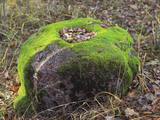


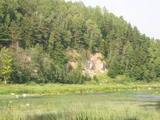






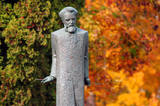









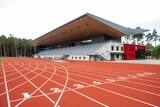
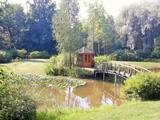


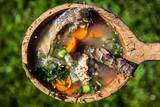

.jpg?size=160)
